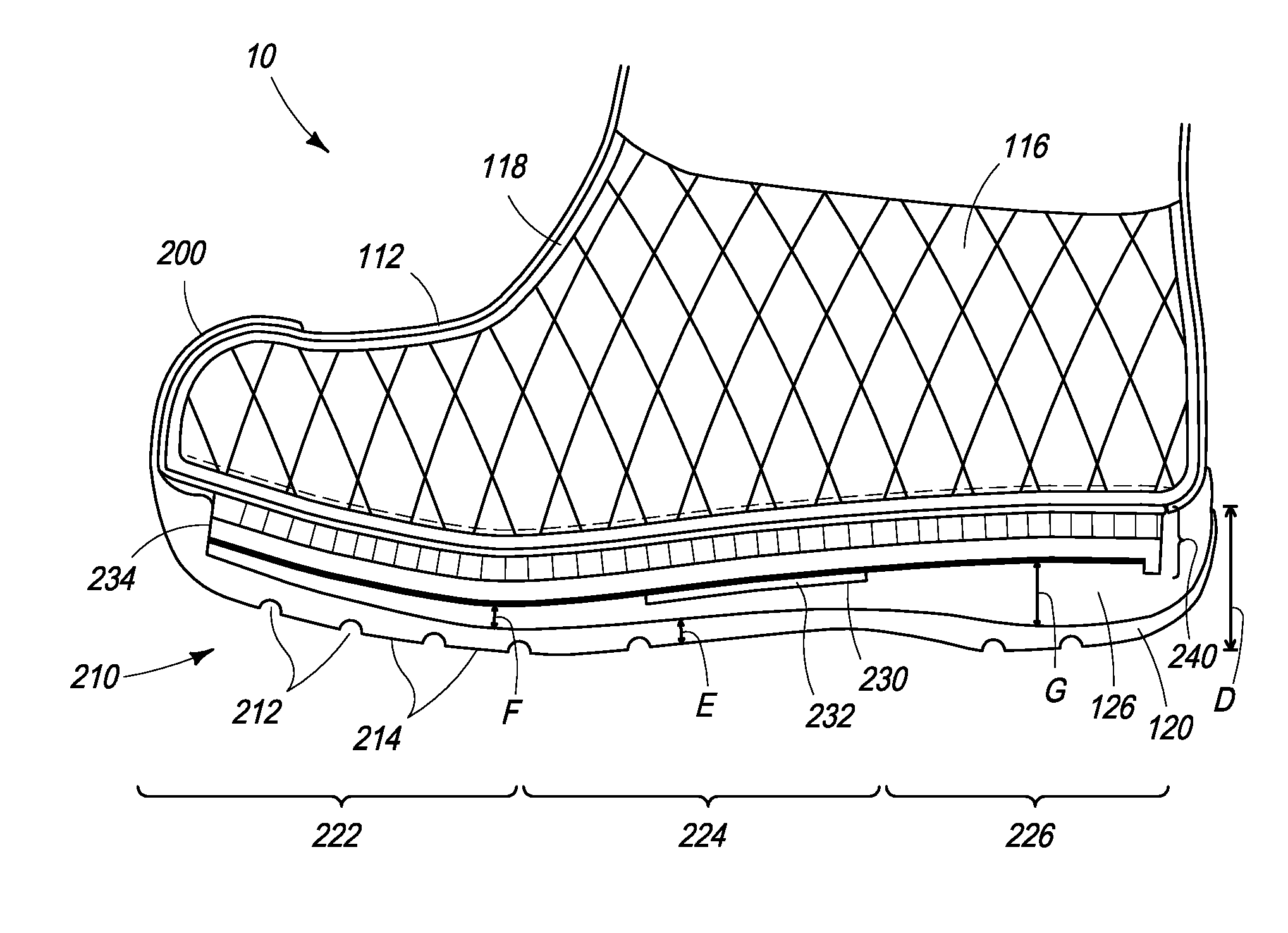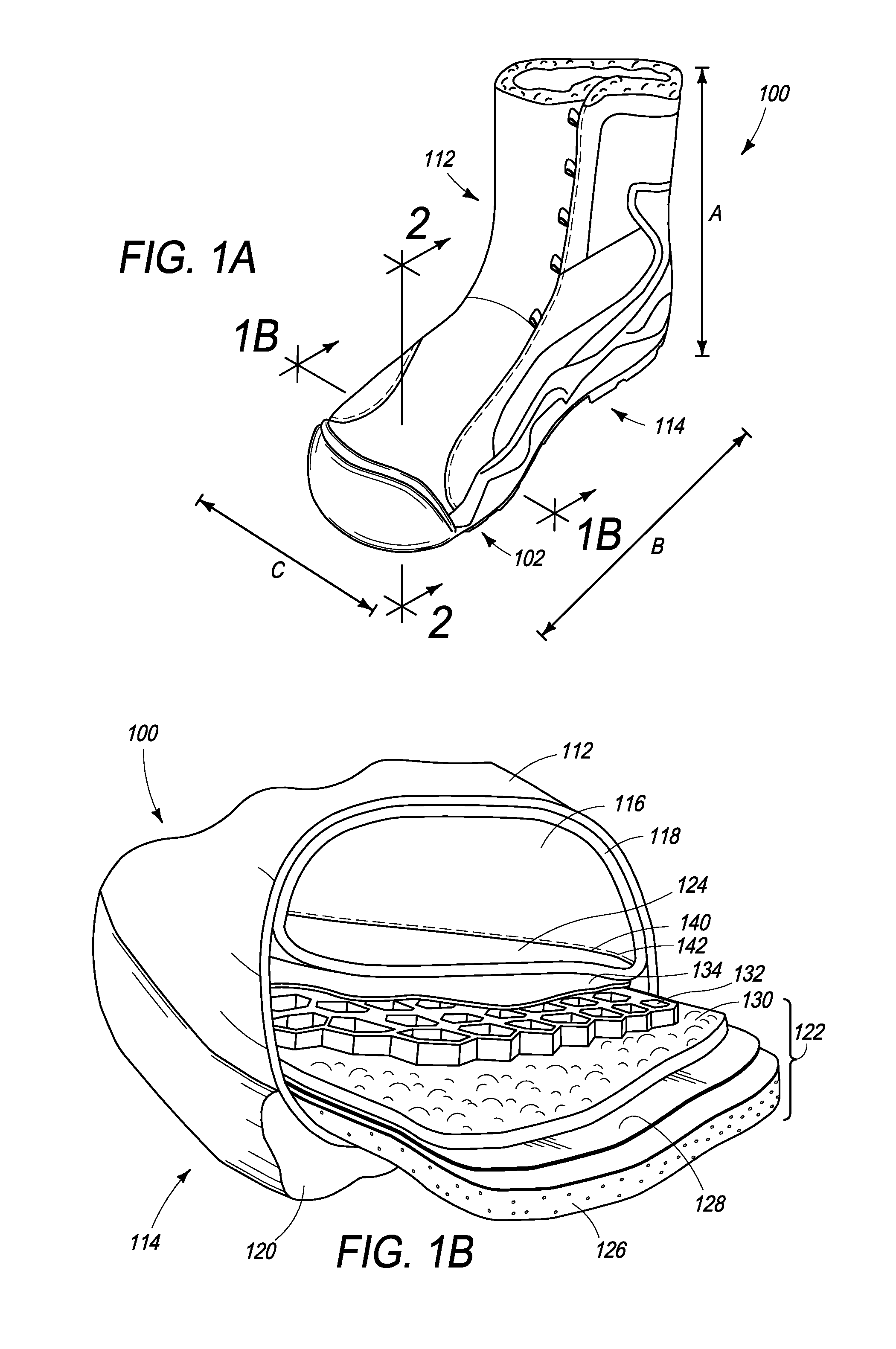Heat Retention and Insulation System for Wearable Articles
a technology of insulation system and wearable article, which is applied in the direction of thin material handling, clothing, footwear, etc., can solve the problems of reducing the lofted airspace, and reducing the radiation of heat loss. , to achieve the effect of reducing the conduction of body hea
- Summary
- Abstract
- Description
- Claims
- Application Information
AI Technical Summary
Benefits of technology
Problems solved by technology
Method used
Image
Examples
Embodiment Construction
[0021]The following description relates to an insulation and warmth retention system for a wearable article or item. As described in more detail below, in one example, an insulation and warmth retention system may include a layered insulation pack. The layered insulation pack may include a perforated air communication and retention layer, also referred to as a perforated layer, a compressible layer and a reflective layer. The perforated layer may be disposed in the wearable article such that it is in air communication with an inner body space. A lofted air space may be formed from the perforated layer where heated air may circulate throughout the inner body space of the wearable article through the perforated layer. Air retained in the wearable article, such as for example, footwear, may be warmed by radiated body heat and retained within the perforated and insulating layers. Further, in some embodiments, the reflective layer may reflect the warmed air (the radiated body heat) back ...
PUM
| Property | Measurement | Unit |
|---|---|---|
| width | aaaaa | aaaaa |
| depth/height | aaaaa | aaaaa |
| height | aaaaa | aaaaa |
Abstract
Description
Claims
Application Information
 Login to View More
Login to View More - R&D
- Intellectual Property
- Life Sciences
- Materials
- Tech Scout
- Unparalleled Data Quality
- Higher Quality Content
- 60% Fewer Hallucinations
Browse by: Latest US Patents, China's latest patents, Technical Efficacy Thesaurus, Application Domain, Technology Topic, Popular Technical Reports.
© 2025 PatSnap. All rights reserved.Legal|Privacy policy|Modern Slavery Act Transparency Statement|Sitemap|About US| Contact US: help@patsnap.com



